[ad_1]
Since the barefoot running boom of the early aughts, there has been much deliberation over gait and running form. From stride length to foot strike, runners, coaches, doctors and researchers have tried to offer solutions for faster running and fewer injuries. But studies suggest your body will develop its most efficient running form on its own over time as you run.
One study involved a group of new runners starting a 10-week half-marathon training program, which commenced with a series of tests evaluating fitness, biomechanics and running economy among other things. While most of the training was done independently, the runners met with a coach once a week for general guidance. When they were brought back into the lab two and a half months later, they showed improvements in speed, endurance and economy. No surprises there.
Interestingly, the researchers suggested that running economy—the efficiency with which they used oxygen at a certain pace—improved because the runners were subconsciously making adjustments to their form to reduce the effort required to run. For instance, most of the participants started to flex their ankles and drive their knees more as they pushed off with each stride, thereby improving cadence.
RELATED: How Running Gait Influences Speed and Economy
Alan Kipping-Ruane, founder and CEO of TriGuy Multisport Coaching in New York City, has seen this firsthand with the athletes he coaches. “When you look at the big picture, such as year to year, you do see form improve with fitness,” he said.
The runners in the study also became more surefooted with each foot strike, but none altered his or her actual strike style. This is in line with other recent research published in the same journal, which detected no mechanical advantages to rearfoot versus forefoot striking. Put simply, the most economical form for one athlete may not be the same for another. The single factor that seems to consistently improve running mechanics and economy across the board, however, is increased fitness.
“Overall breathing pattern while running changes as well—becoming more efficient—and they also develop better posture as they start to get a greater feel for their body,” said Kipping-Ruane.
To be sure, this doesn’t mean that one should simply put his or her body on autopilot and ignore glaring form issues on the run. However, the research does suggest that many athletes will simply intuit necessary adjustments over the miles. When all is said and done, one aspect of the gait debate that everyone can agree on is that progressive training may be the only real silver bullet when it comes to improving fitness and, in turn, form.
While more running means better form and fitness, strength training can promote greater running efficiency. If you’re looking to put in more miles and avoid early fatigue, consider working this simple strength routine into your schedule two to three times per week.
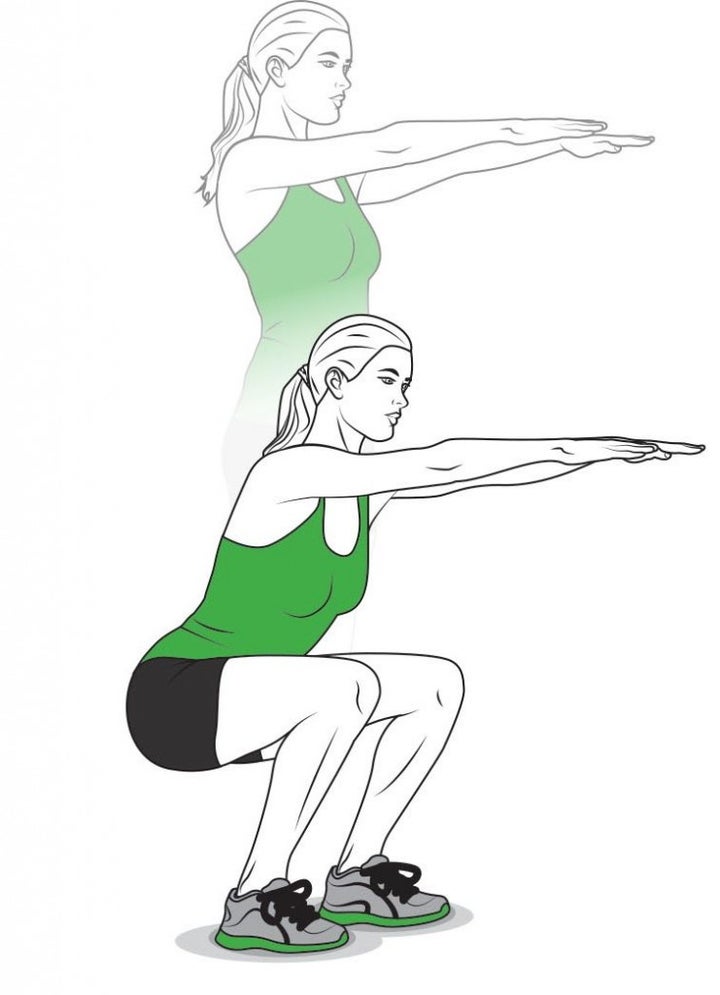
With your feet hip-width apart, slowly lower your body downward as if you were sitting down. Keep your knees aligned with your ankles and feet, avoiding bending over your toes. Once you reach a 90-degree angle, stand back up. Do 10–12 reps.
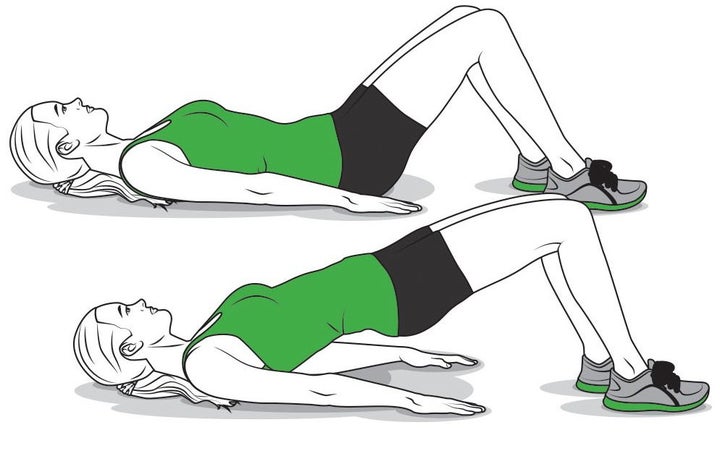
Lie on your back with your knees bent and feet flat on the floor. With your arms at your sides, lift your butt off the floor, keeping your back straight, and hold for 20 seconds. Do 4–6 reps.
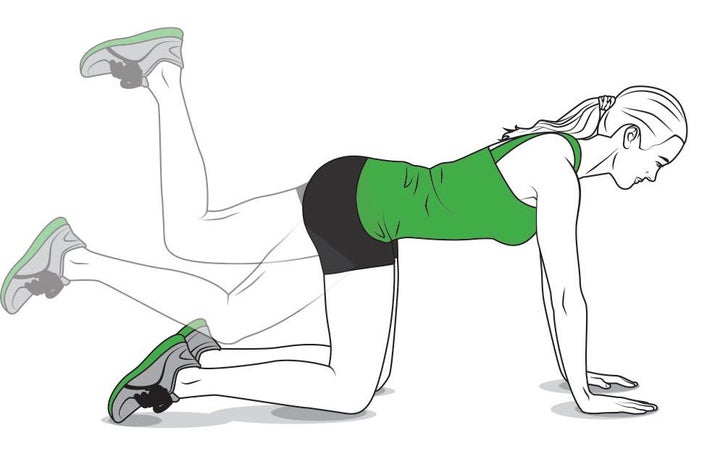
Get on all fours on the floor. Stabilizing your body, kick one foot back and up before returning the knee to its starting position. Do 15 reps per side.
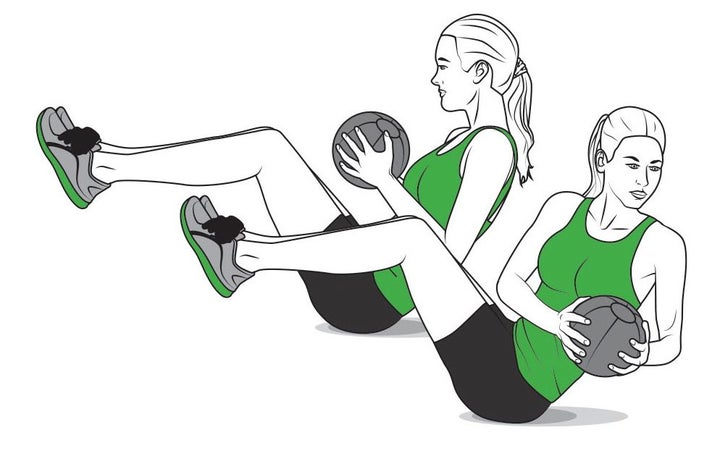
Sit on the ground with your knees bent and lean back slightly so you feel your abdominal muscles engage. With a medicine ball or dumbbell, carefully rotate right to left. Do 20–30 twists. Illustration by Oliver Baker.
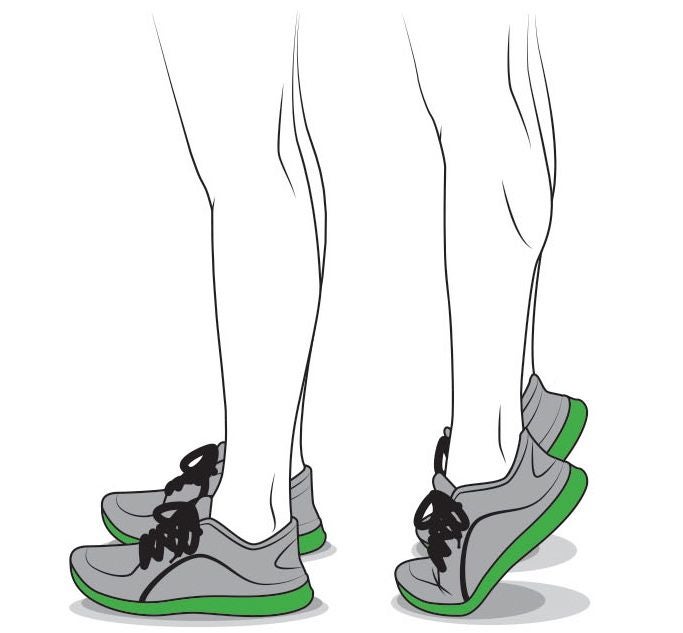
Standing, slowly raise your body up onto your toes and back down. Do 20–30 reps.
This article originally appeared in the July 2014 issue of Triathlete magazine.
[ad_2]
Source link

